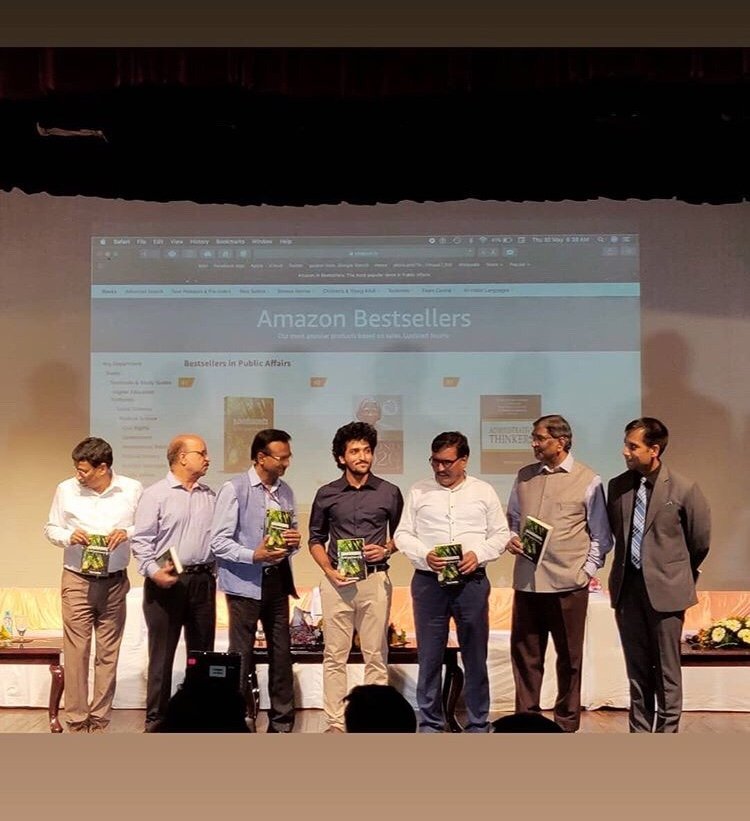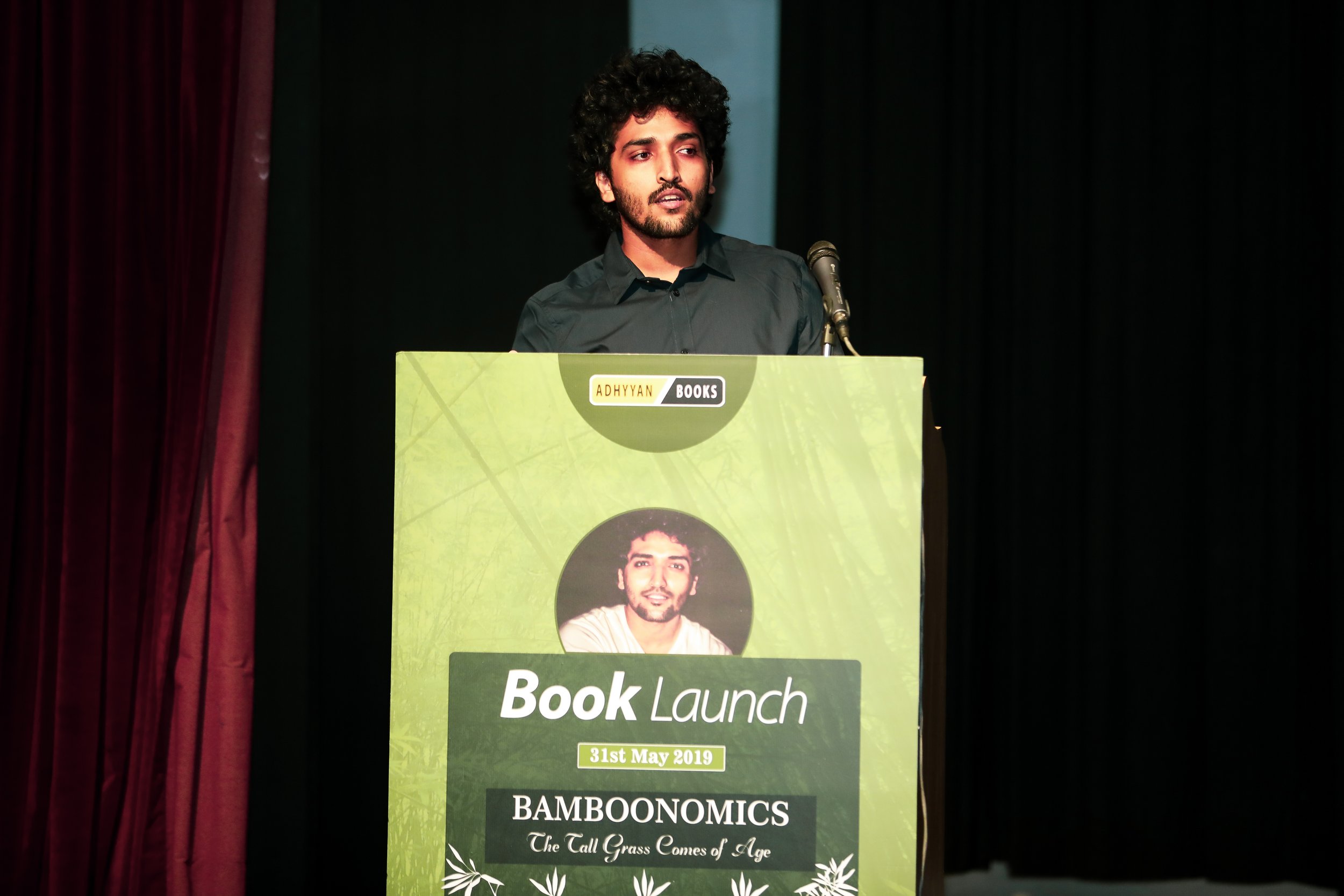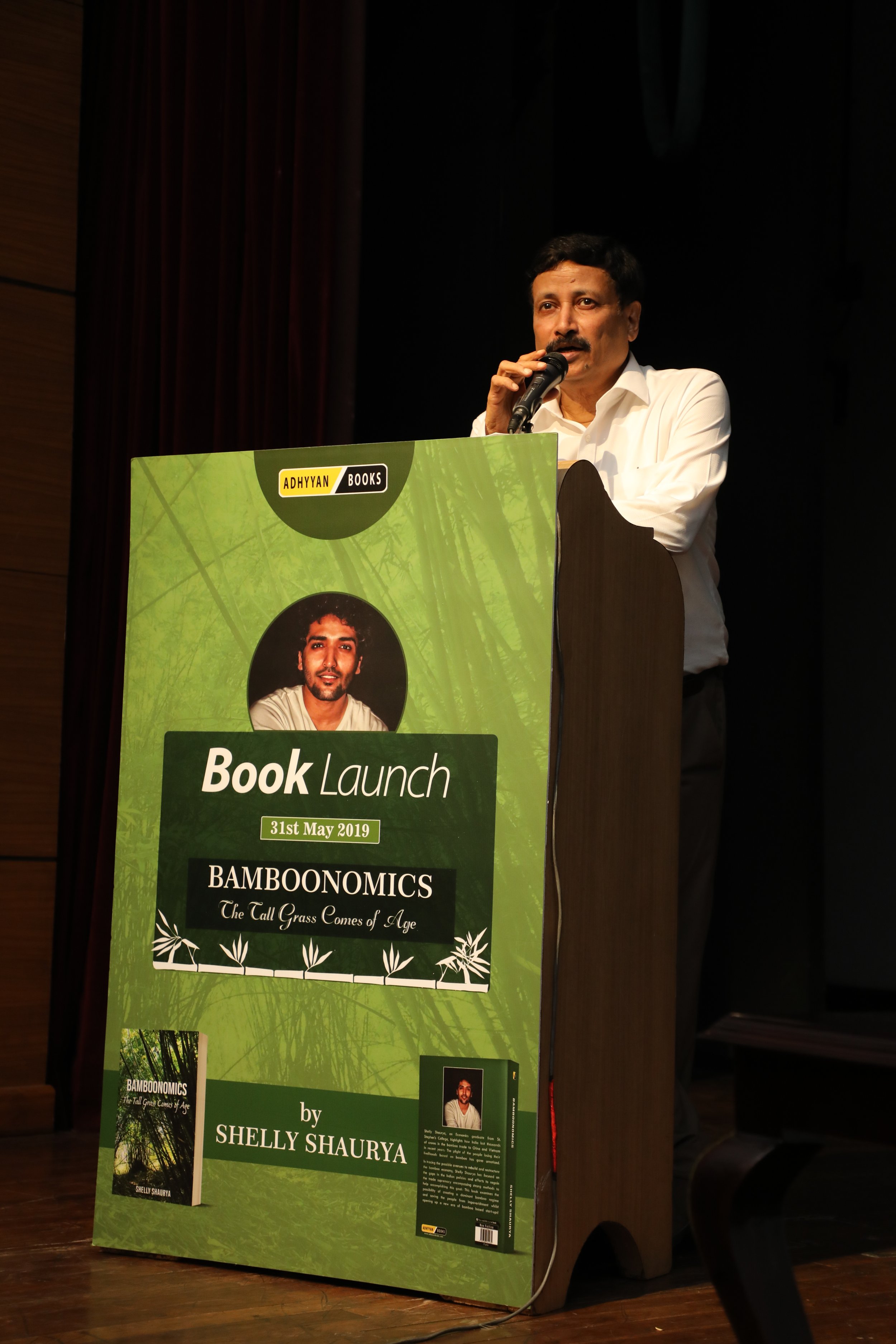




Bamboonomics
Bamboonomics is the economics of the bamboo industry in the Indian context. It covers an entire gamut of ideas and areas besides the economics of the bamboo industry. It covers the aspirations of the communities (tribal community in particular) involved in it; the technicalities pertaining to the usage of bamboo in various areas; from growing to eating bamboo shoots to making furniture to using bamboo charcoal in reviving wastelands, to improve the soil fertility, to making bamboo silk. Bamboonomics covers the socio-economic impact that bamboo and its products have. It covers and formulates the policy changes and framework required to sustain and expand this industry in India and subsequently at the world stage.
In December 2017, PM Modi took the step of declaring bamboo as a ‘grass’ from its accepted status of a ‘tree’. The govt. amended the 1927 forest act and declared bamboo as a grass again, a step that should have been taken a long time back.
But nevertheless, it was a monumental step taken by PM Modi but in the 2 years that followed nothing really happened to take advantage of this step. The Restructured National Bamboo Mission (RNBM), which is made for the sole purpose of looking into bamboo and its industries, didn’t know what to do. The Indian National Policy on Bamboo is non–existent despite the National Bamboo Mission (NBM 2006) or the Restructured National Bamboo Mission (RNBM 2016) and India being the second largest producer of bamboo. Their failure to make a National Bamboo Policy led to very sparse & misdirected efforts in creating a successful bamboo regime. With all the actors acting separately without any integrated or holistic approach, there is virtually no bootstrap mechanism to resurrect the bamboo economy.
The IFS officers are still in their “silviculture syndrome” and the only steps they took, besides making some handicrafts out of bamboo that doesn’t have a market in India, was to discuss how to plant moso bamboo (the species grown in China) in India. They till date don’t have any plan on how to use the existing species in India. In fact, they have declared that out of 136 species present in India, only 10 have some economical value. Whereas I can state that all 136 species can be used be used economically.
India used to be a net exporter of bamboo and bamboo products. The Chinese came and explored the Indian market and technology, and since 2007 is slowly making its foothold stronger in India and by now has full control of the agarbatti industry. India has fallen prey to Chinese and Vietnamese sinister design and has become a net importer of raw bamboo materials within a few years’ time. The Chinese and Vietnamese are supplying all the raw materials for the Bamboo Agarbatti industries in India now. As a result, thousands of workers especially women have become jobless, many small factories have closed down and Indian bamboo is rotting in the jungles of India with virtually no gainful industrial use. The impoverishment of people has gone unnoticed while Agarbatti industry owners are making huge profits.
The Agarbatti industry is exporting and flourishing right now. It has gone up to approximately Rs. 950 crores, but now is in danger of becoming zero (repeating the bamboo international trade story). From no.1 position in Agarbatti exports, India now has been pushed behind by China and Vietnam. Today China and Vietnam control all the raw material supply and any time they can scuttle the Indian Agarbatti trade.
There are yawning gaps in the Indian effort to revive the bamboo trade. One of the major reasons why the concerted efforts of Restructured National Bamboo Mission (RNBM) is bound to fail is unless they address the issue of 88% wastage of Indian Bamboo in making the bamboo products especially round bamboo sticks for the agarbatti (incense) industries of India. The waste utilization is the key to success but there are almost no efforts in this direction. The first bamboo mission, started under the Congress Government, was almost a failure without causing any positive impact and the bamboo trade was captured conveniently by China and later Vietnam.
Now, there is no focus on bamboo waste utilization. There are avenues in the form of bamboo silk and bamboo cotton, bamboo charcoal, and bio-degradable bamboo plastics. Bamboo silk can revolutionize the silk industry and work is being done by me in collaboration with the Central Silk Board to study the “Emergence of Bamboo Silk and its Socio-Economic Effects on the Existing Silk Industry: Opening up & Enhancing Alternative Livelihood Options in the Tribal and Rural Areas”. Once we are able to find the conclusions, it will be a game-changer in the textile industry in India.
Bamboo silk has its own advantage. It has four times more absorption capacity than cotton and is anti-fungal and anti-bacterial.
The other area where bamboo can fetch immediate income is by making bamboo charcoal and activated bamboo charcoal. Bamboo charcoal can be used in restoring degraded land and also to increase the soil fertility in the agricultural land. Currently, India has 2% carbon content in the soil in hilly areas and 1% carbon content in the plains, whereas the world average is 4%. Thus, to increase this carbon content bamboo charcoal can be a very viable option.
Activated charcoal is being sold on Amazon for Rs.503 for 200 grams. And one bamboo can fetch roughly 600 grams to 1200 grams of activated bamboo charcoal. Thus, from an Rs.50-80, one bamboo will cost Rs.2000-2500. Thus, you can see how this will provide the tribal community with a substantial side income.
It is seen that India emphasizes more on the “silvicultural approach” as most of the land degradation issues and rehabilitation of wasteland have been tackled by planting the suitable tree species. Even in that, the versatility of the Bamboo has been missed while trees with long gestation period and little economic or ecological value were planted in the degraded soils. Though they could grow in degraded soils, the growth was mostly stunted and the soil improvement takes a long time, and sometimes it gets further drained of nutrients and moisture. It has been seen that the areas where the soil was really bad, the plantations failed after an initial blip. The soil did not improve or become resilient by merely planting the hardy species. At some places where water harvesting etc. were successful, partial success was achieved.
Another lacuna that affected the wastelands development in India is no pro-soil approach either in its planning or the guidelines. That is where ‘4P1000’ and use of bio-char, or now as TRIFED has established, through the idea of Bamboonomics, bamboo-char or bamboo charcoal. The bamboo charcoal can be an important tool to save the degraded lands in India that according to Governmental estimates are around 38 million hectares.
The “Bonn Challenge”, established in Germany in 2011, under which Germany, India, and many other countries decided to rehabilitate 350 million hectares of degraded land by 2030 leading to substantial carbon sequestration.
According to IUCN, India has covered 9.8 million hectares till now. And I think it’s going to be a very difficult task to cover the remaining 3.2 million hectares by 2020. In 15 months around .2 million (2 lakh) hectares will have to be covered each month.
To add to this, PM Modi stated at UNCCD COP 14 that India will restore another 5 million hectares of wasteland by 2030. In order to achieve this target, newer approaches are needed as it is clear that just by tree plantation it won’t be achieved.
Bamboo can be cut and used to make charcoal to restore degraded land. At the same time, if cut in a particular way bamboo can grow again by the same rhizomes. As bamboo grows very fast and reaches its full height in 5-6 years, it sequesters more carbon than a tree. Thus, it’s a two-way benefit.
The treatment of the land (soil) in this way would also generate side-income adding up to better livelihoods. The bio-char especially bamboo char could be a great tool in this effort of achieving “The Bonn Challenge targets in a 4P1000 Initiative regime” especially after the amendment in the Indian Forest Act 1927, categorizing bamboo as a “grass”. With extremely vast resources of bamboo in India, this is a possibility.
There is a word of caution and the imperative need for involving Bamboo in the 4P1000 Initiative. The bamboo forests are sensitive ecosystems with a high risk of becoming large GHG emitters. Their protection requires support via international mechanisms to ensure non-destructible management and sustainable income-generating alternatives around them. The efforts undertaken by the TRIFED in spreading this knowledge would require various experts and expertise around bamboo and tribal livelihoods, enhancing the potential of land to sequester carbon and overall sustainable land management, thus contributing to the Bonn Challenge achieving LDN by 2030. Hence, we need to chalk out good pathways and innovations for collaboration in effectuating the 4P1000 Initiative and achieving LDN and NDCs in India.
Bamboo can be used in the housing sector as well. The Bamboo housing has been put in a new perspective through bamboonomics and that will definitely put the mandarins of PMAY (Prime Minister Awas Yojna) to improve upon their concept of bamboo housing in the scheme.
India has one of the richest bamboo resources in the world, second to China in Bamboo production. The annual bamboo production in the country is estimated at 3.23 million tons. According to the Forest Survey of India (FSI), in India bamboo grows in 8.96 million hectares of forest area, which constitutes about 12.8% of the total forest area of the country. Thus, the avenues suggested through bamboonomics will truly transform the bamboo industry. It will help get the control of the agarbatti industry back to India by utilizing 88% waste when making round bamboo sticks for agarbatti, by converting it into bamboo charcoal, activated bamboo charcoal and bamboo silk. Also, bamboo can be used in housing and it can be mixed with plastic and form bamboo plastic. This way at least immediately 50% of the plastic usage will decrease.
Bamboonomics will help provide jobs to more than 30 million tribals and at the same time these tribals will help India achieve its “Bonn Challenge” targets and in the process, it will be the biggest tribal movement to combat desertification and climate change in the world.